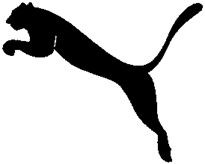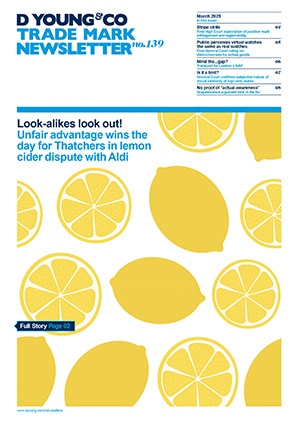Machinery opposition a jump too far for Puma: Puma v Gemma Group
This General Court decision (T-510/19) concerns an opposition by Puma SE (Puma) against an application for machine related goods in class 7 by Gemma Group (Gemma) as shown below.

Puma opposed Gemma’s application, shown below, based on EU national rights in classes 18, 25 and 28, claiming Gemma’s application took unfair advantage of or caused detriment to its reputation in its Puma device under A8(5) EUTMR.

The Opposition Division and the Board of Appeal rejected the opposition but the General Court annulled the Board of Appeal decision. The General Court held that Puma had relied on earlier EUIPO decisions which found a reputation in Puma’s mark and the Board of Appeal’s failure to take these into account may have had a decisive influence on the outcome of the opposition. The decision was sent back to the Board of Appeal to reconsider Puma’s appeal in light of the EUIPO decisions confirming Puma’s reputation.
The Board of Appeal again rejected Puma’s appeal, noting Puma’s mark had a reputation and the marks at issue were similar to a degree but that the link between the marks in the minds of the relevant public, which is required to establish an A8(5) claim, did not exist because the relevant publics were too different.
General Court decision
The General Court found Puma’s public was the general public whereas Gemma’s public was professional and specialist. There was no link between them. Puma claimed its business activities extended into machines and therefore, the relevant publics were closer; however, this evidence was new to the General Court and therefore inadmissible. The General Court further held that marks must be examined as a whole and you cannot only compare the dominant elements. Acknowledging the Board of Appeal had noted various similarities between the marks, the General Court found the marks were only similar to a certain degree and therefore, the need for proving the link in the minds of the relevant public was paramount. As this was not proven, the appeal failed.
Puma had also appealed against the degree of reputation its marks had been found to possess because the Board of Appeal only took into account certain documents. Puma’s evidence was criticised for not adequately supporting the reputation claim. For example:
- Puma had relied on a survey in Sweden but no Swedish national rights had been relied on in the opposition;
- documents were not translated into the language of the proceedings and were therefore inadmissible; and
- a survey in France was unclear in terms of the goods to which it related, the basis for its completion and was more than five years old at the date of the application in question so its relevance was questioned.
Therefore, the General Court held it could only consider the reputation evidence from the EUIPO, namely the prior decisions which had found a reputation. Whilst a reputation had been established, it was not proven to be “exceptional”.
In a further blow to Puma, the General Court rejected arguments which Puma had brought before the General Court for the first time, holding it can only review prior decisions and is not there to re-evaluate facts based on evidence brought before the court for the first time.
Puma claimed it was deprived of submitting additional evidence but this was deemed unfounded given the Regulations provide opportunities to file evidence and the examination of an A8(5) claim is limited to an examination of that evidence. The Board of Appeal has the discretion to ask for clarity but in the present case, the Board of Appeal had examined the earlier EUIPO decisions finding a reputation in Puma’s marks and did not need to invite Puma to file additional evidence of reputation.
The General Court further held that actual harm is not required for a finding of detriment or unfair advantage – it is sufficient if the harm is foreseeable; however, one must prove there is a risk of serious harm or injury occurring in the future. Puma had failed to show the required link in the minds of the relevant public, so in this case, no harm was established.
In short
The decision is a useful reminder that simply owning a reputation is not enough to succeed under A8(5). You still have to prove that the relevant public will make a link between the trade marks. Therefore, an entirely different relevant public may impact the success of an A8(5) claim if a link cannot be proven, even though the law does not require similarity of goods or services.
If submitting evidence of reputation, it is necessary to ensure that all relevant evidence is submitted at the earliest stage possible to avoid it being deemed inadmissible. Evidence should be translated into the language of the proceedings, be clear and also both time and geographically relevant.
Case details at a glance
Jurisdiction: European Union
Decision level: General Court
Parties: Puma SE v EUIPO (also Gemma Group Srl)
Date: 19 May 2021
Citation: T-510/19

